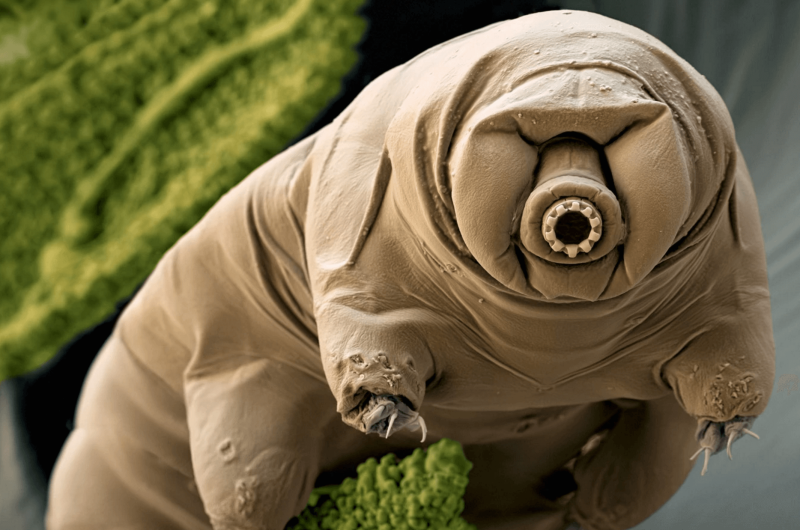The GLP aggregated and excerpted this blog/article to reflect the diversity of news, opinion and analysis.
Scientists have known for centuries about the tardigrades’ ability to dry themselves out. But a new study suggests that this ability might have contributed to their superlative endurance in a strange and roundabout way. It makes them uniquely suited to absorbing foreign genes from bacteria and other organisms—genes that now pepper their genomes to a degree unheard of for animals.
Thomas Boothby from the University of North Carolina at Chapel Hill made this discovery after sequencing the first ever tardigrade genome. . . [NOTE: tadigrades are also known as water bears or moss piglets) are water-dwelling, eight-legged, segmented micro-animals]
Boothby thought his team had done a poor job of assembling the tardigrade’s genome. The resulting data was full of genes that seemed to belong to bacteria and other organisms, not animals. . .
But the team soon realized that these sequences are bona fide parts of the tardigrade’s genome.
That wouldn’t be unusual for bacteria, which can trade genes with each other as easily as humans might swap emails. But these “horizontal gene transfers” (HGT) are supposedly rare among animals. For the longest time, scientists believed that they didn’t happen at all, and reported cases of HGT were met with extreme skepticism.
… Boothby found that foreign genes make up 17.5 percent of the tardigrade’s genome — a full sixth. … “The number of them is pretty staggering,” he says.
Read full, original post: Inside the Bizarre Genome of the World’s Toughest Animal































